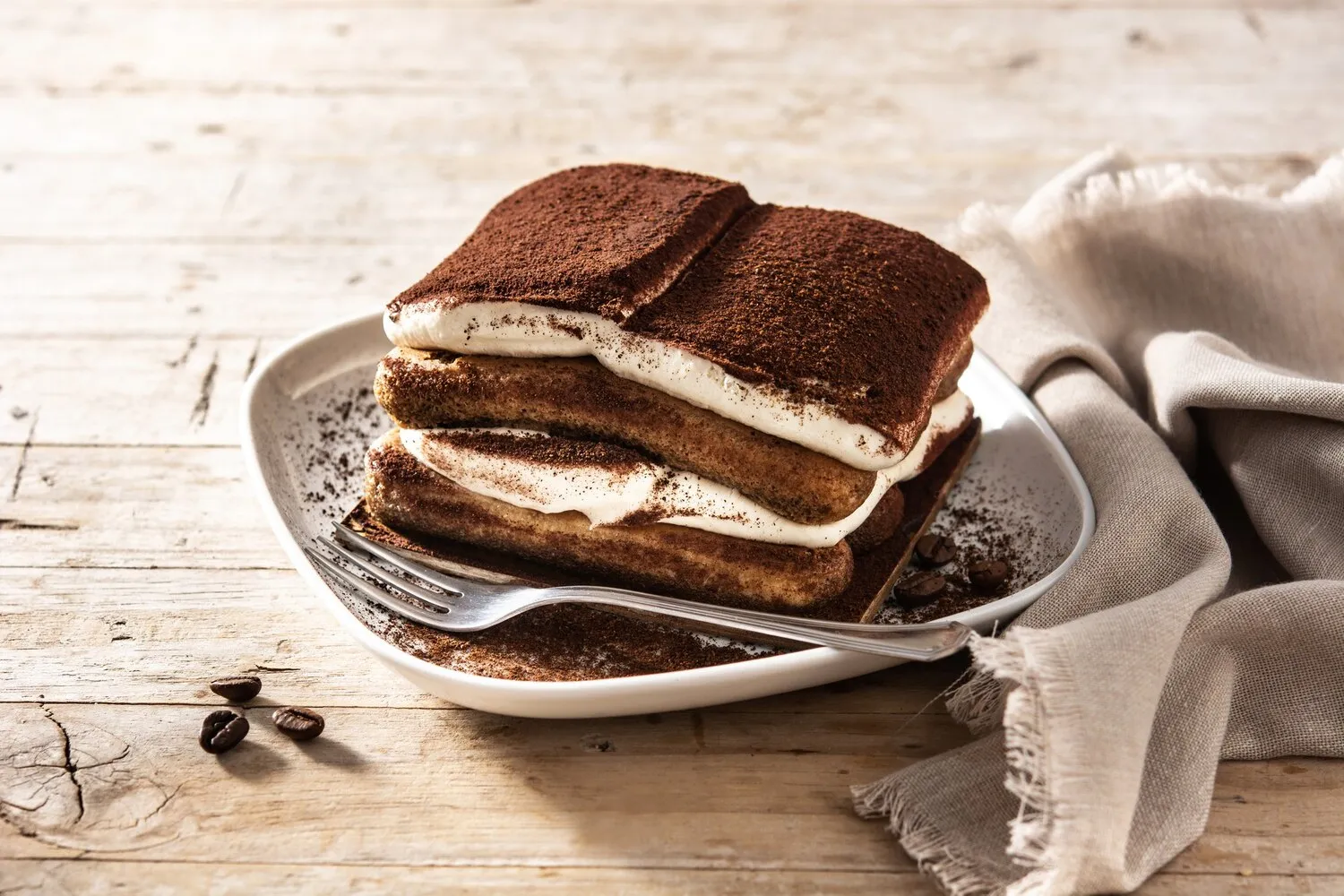
Tiramisu
Classic Italian dessert with coffee-soaked ladyfingers, mascarpone cheese, and cocoa.
Nutrition Facts
* The % Daily Value (DV) tells you how much a nutrient in a serving of food contributes to a daily diet. 2,000 calories a day is used for general nutrition advice.
Tiramisu's exact origins are debated, but it's widely believed to have originated in the Veneto region of Italy in the late 20th century. There are various theories, some linking it to a dessert served in Treviso brothels to invigorate customers, others suggesting it was created by a pastry chef for a visiting dignitary. Regardless of the exact story, it emerged as a recognizable dessert relatively recently, incorporating elements like coffee, cocoa, and mascarpone that were already part of the Italian culinary landscape.
Tiramisu has become a beloved dessert worldwide, representing Italian culinary ingenuity and a spirit of indulgence. It is frequently served at family gatherings, celebrations, and in restaurants as a satisfying end to a meal.
Family Celebrations
Tiramisu is often made at home for special occasions, with each family having their own slightly different recipe passed down through generations.
Restaurant Staple
Its popularity ensures that Tiramisu is a standard offering on the dessert menus of Italian restaurants around the globe.
Symbol of Italian Cuisine
Tiramisu is a prime example of Italian culinary craftsmanship, combining simple yet high-quality ingredients to create a memorable flavor experience.
Tiramisu is a symphony of rich, contrasting flavors and textures. The bitterness of coffee is perfectly balanced by the sweetness of mascarpone cream and the slight bitterness of cocoa powder.
The dominant flavors include the intense, roasted flavor of coffee (often espresso) which permeates the ladyfingers (savoiardi). Mascarpone cheese provides a creamy, rich, and slightly tangy base. A dusting of cocoa powder adds a touch of bitterness and chocolatey notes. Some variations include a liqueur, such as Marsala wine or coffee liqueur, which adds another layer of complexity.
Coffee Soak
Don't over-soak the ladyfingers, or they will become soggy. A quick dip is all you need. Use strong, freshly brewed espresso for the best flavor.
Mascarpone Cream
Gently fold the mascarpone with the sugar and eggs. Overmixing can result in a thin, runny cream. Use high-quality mascarpone for the best results.
Chilling Time
Allow the Tiramisu to chill for at least 4 hours, or preferably overnight, to allow the flavors to meld and the textures to set properly.
Cocoa Dusting
Dust the Tiramisu with cocoa powder just before serving to prevent it from becoming soggy.
Explore additional Sweet food dishes and restaurants
Explore Sweet foodDiscover top dining spots and culinary experiences in St. Gallen.
Explore St. GallenLearn more about the food culture, restaurant scene, and culinary heritage of Switzerland.
Explore Switzerland
